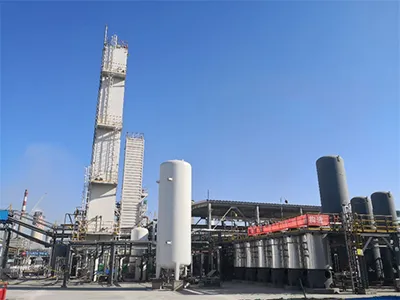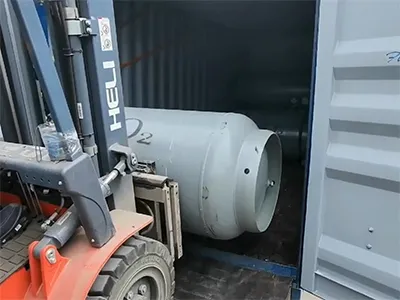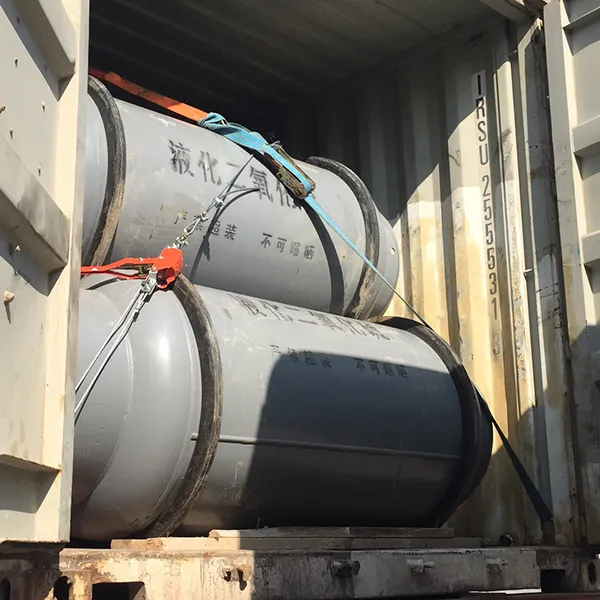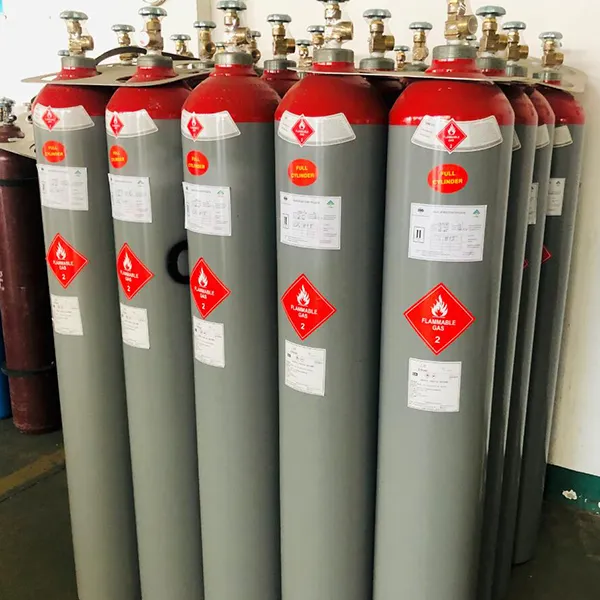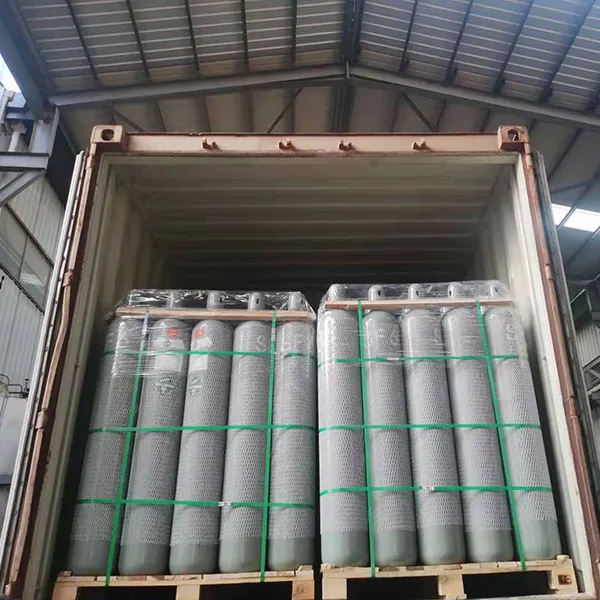What is compressed gas?
What is compressed gas?
Compressed gas is defined as "a gas or mixture of gases having an absolute pressure exceeding 40 psi at 70°F (21.1°C) in a container; or a gas or mixture of gases having an absolute pressure exceeding 40 psi in a container."
What types of compressed gases are classified?
What types of compressed gases are classified?
Compressed gases are classified as flammable, inert, toxic, and oxidizing gases.
How to handle industrial gas cylinders?
How to handle industrial gas cylinders?
All cylinders should be properly labeled to identify their contents. If leaking, move them outdoors away from open flames, slowly empty them, and place a warning label on the leaking cylinder.
What are the main precautions for industrial gas cylinders?
What are the main precautions for industrial gas cylinders?
Never attempt to refill compressed gas into a cylinder, do not smoke around cylinders, label leaking or damaged cylinders immediately, and do not use the cylinder body as a tool for other purposes.
What is the function of the safety device on the compressed gas cylinder?
What is the function of the safety device on the compressed gas cylinder?
The safety device connected to the compressed gas cylinder is a pressure relief valve, which prevents the internal pressure from exceeding safe limits to avoid explosions and protect personal safety.
What does the color identification of compressed gas cylinders represent?
What does the color identification of compressed gas cylinders represent?
Compressed gas cylinders use color coding to indicate the type of gas they contain. For example, green represents oxygen (O2), black represents nitrogen (N2), and light gray represents hydrogen (H2).
Why do compressed gas cylinders need to be stored vertically?
Why do compressed gas cylinders need to be stored vertically?
Storing cylinders vertically ensures the integrity of the cylinder valve, reduces the risk of physical damage, and prevents gas leaks that could cause injuries or fatalities.
What should be noted when transporting compressed gas?
What should be noted when transporting compressed gas?
Compressed gas cylinders need to be stored vertically to prevent tipping or rolling. Use appropriate hand trucks for transport, keep cylinders away from heat sources, direct sunlight, and flammable materials.
How to label compressed gas?
How to label compressed gas?
Ensure that labels on cylinders, containers, and pipelines are clear and visible for gas identification. Labels must not be damaged or removed. Do not accept or use containers with unclear labels.
How must compressed gas be separated during storage?
How must compressed gas be separated during storage?
Gases should be grouped and stored according to their hazards. For example, fuel gases and oxidizing gases like oxygen (O2) must be kept separate, but inert gases can be stored next to both. Provide adequate space or barriers for separation, and display clear signs identifying gases or hazard levels. Storage areas should be dry and well-drained.
What safety measures must be taken when using compressed gas cylinders?
What safety measures must be taken when using compressed gas cylinders?
After work, cylinder valves must be closed, and valves must be closed before moving cylinders. Cylinders should not be used as rollers or supports, whether full or empty.
What preventive measures should be taken when using compressed air in enclosed spaces?
What preventive measures should be taken when using compressed air in enclosed spaces?
Proper ventilation and monitoring of gas accumulation or oxygen (O2) depletion are crucial to prevent asphyxiation or explosion risks when using compressed gas in confined spaces.
Why does the tank generate heat when compressing gas?
Why does the tank generate heat when compressing gas?
If you compress gas adiabatically (without allowing heat to enter or leave), you are doing work on the gas, which increases its internal energy. Temperature is a measure of internal energy, so compression increases the surrounding temperature.
Will compressed gas become a liquid for storage?
Will compressed gas become a liquid for storage?
Certain gases, known as liquefied compressed gases, become liquids when pressurized in cylinders at normal temperatures. These include methane (CH4), natural gas, and liquefied petroleum gas. Other gases remain in gaseous form for storage.
What is the general method for compressing gas?
What is the general method for compressing gas?
Compressing gas in a container requires reducing its volume to increase pressure. This can be achieved through various methods, including physically compressing the gas with a piston or mechanically increasing gas pressure with a compressor.
What are the usage standards for pressure reducers and gas cylinders?
What are the usage standards for pressure reducers and gas cylinders?
Cylinders should be stored in a cool, dry place away from heat sources and direct sunlight. Handle cylinders carefully, screw on cylinder caps, and avoid impacts or collisions. Pressure gauges should not be interchanged; oxygen (O2) cylinders must use specialized oxygen (O2) pressure gauges. Pressure reducers and gauges should be installed when in use. Flammable gas cylinders have reverse threads, while non-flammable or oxidizing gas cylinders have standard threads.
Safety precautions for using oxygen and acetylene cylinders?
Safety precautions for using oxygen and acetylene cylinders?
Cylinders should not be placed near heat sources, exposed to sunlight, rain, or water. If the ambient temperature exceeds 40°C, shading or cooling measures should be taken. Acetylene (C2H2) cylinders must have a dedicated pressure reducer and flashback arrestor at the valve outlet. The pressure reducer should have a clamping device to connect with the cylinder valve.
What should be noted when transporting industrial compressed gases?
What should be noted when transporting industrial compressed gases?
When transporting cylinders, close the cylinder valve, secure the valve protection cap, and use a hand truck designed for cylinder transport. Do not lift cylinders by the valve protection cap. Inspect cylinders for dents, bulges, cracks, or other damage before use. Do not use damaged cylinders or allow cylinders to strike each other.
What are the uses of industrial gases?
What are the uses of industrial gases?
Industrial gases have a wide range of uses. Nitrogen (N2), oxygen (O2), and carbon dioxide (CO2) are used in various industrial processes. Nitrogen (N2) is used for welding, oxygen (O2) is crucial for steel production, and carbon dioxide (CO2) is used for dry ice blasting, fire extinguishing, and beverage carbonation.
How to handle industrial gases?
How to handle industrial gases?
Before starting any work involving industrial gases, read the safety data sheet and familiarize yourself with the gas type, properties, and safety measures. Wear all necessary protective equipment. Ensure industrial gas containers are properly labeled and sealed to prevent leaks.
What does industrial gas include?
What does industrial gas include?
Industrial gases include nitrogen (N2), oxygen (O2), argon gas (Ar), carbon dioxide (CO2), ozone, neon, helium (He), krypton, methane (CH4), hydrogen (H2), and nitrous oxide (N2O), which are commonly used in various industries.
What is the reason for insufficient gas pressure during use?
What is the reason for insufficient gas pressure during use?
First, check for leaks in the gas supply pipeline and repair any leaks immediately. Next, ensure the pressure regulator in the gas supply system is functioning correctly; replace it if faulty. Additionally, adjust the supply pressure of the gas system to ensure it meets production needs.
What is the reason for unstable gas quality during use?
What is the reason for unstable gas quality during use?
First, check if the gas source has quality issues. It is essential to choose a reliable and stable gas supplier. Second, clean and maintain the gas pipeline system to prevent impurities and contaminants from affecting gas quality. Additionally, regularly inspect and calibrate the gas quality detection instruments in the gas supply system to ensure accurate and reliable gas quality.
What should be noted in the use of industrial gases?
What should be noted in the use of industrial gases?
During welding, appropriate protective measures should be taken for gas and electrical facilities. Do not use damaged equipment such as hoses, cables, and welding guns. Inert gases (e.g., Nitrogen (N2), Argon gas (Ar), Carbon Monoxide) should not be used in confined spaces for experimental analysis, welding, cryogenic freezing, or purging.
What are the main uses of industrial gases?
What are the main uses of industrial gases?
Industrial gases are mainly used in metallurgical industry for nitrogen (N2) cutting and welding, chemical industry for the production of ammonia (NH3), electronics industry for semiconductor manufacturing, food industry for processing and packaging, medical industry for diagnostics and treatment with various devices and instruments
What should be noted after purchasing industrial gases?
What should be noted after purchasing industrial gases?
After purchasing gas, check the cylinder's paint color, production date, appearance, and safety devices to confirm the correctness of the contained gas. During transportation and handling of industrial gas cylinders, they should be handled gently, not thrown, slid, rolled, or bumped. All users of industrial gases such as acetylene (C2H2), methane (CH4), and propane (CH3CH2CH3) need to install a one-way valve and flashback arrestor at the pressure regulator outlet to prevent backflow and flashback. An oxygen (O2) cylinder should have a check valve at the pressure regulator outlet to prevent gas backflow.
How to choose the industrial gas you want?
How to choose the industrial gas you want?
First, determine the type of gas needed based on your industry application. Then, consider the quality and purity to ensure process stability. Determine the flow rate and pressure to meet process requirements, and consider temperature and cost for a reasonable choice of industrial gas.
Can industrial gases be stored for a long time?
Can industrial gases be stored for a long time?
Some inert gases such as argon gas (Ar), carbon dioxide (CO2), and helium (He) do not have a defined shelf life because they are very stable and can be stored for a long time without undergoing any reaction. However, gases containing corrosive substances such as ammonia (NH3), hydrogen chloride (HCl), chlorine, and methylamine can degrade over time and are not suitable for long-term storage.
How are industrial gases mainly classified?
How are industrial gases mainly classified?
Oxygen (O2) gases: This category includes oxygen (O2) and liquid oxygen, which are used in various oxidation and combustion reactions.
Inert gases: This category includes helium (He), argon gas (Ar), neon (Ne), and others, which are used in welding protection, arc furnace smelting, zirconium oxide preparation, semiconductor manufacturing, and other industries.
Rare gases: This category includes krypton (Kr), xenon (Xe), radon (Rn), and others, which are used in lasers, gas detection, medical fields, and more.
Inert gases: This category includes helium (He), argon gas (Ar), neon (Ne), and others, which are used in welding protection, arc furnace smelting, zirconium oxide preparation, semiconductor manufacturing, and other industries.
Rare gases: This category includes krypton (Kr), xenon (Xe), radon (Rn), and others, which are used in lasers, gas detection, medical fields, and more.


